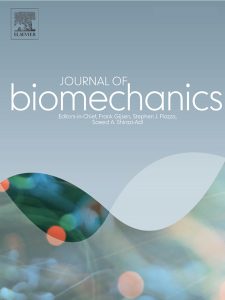Publications

Passive mechanical properties of extrinsic foot muscles and Achilles tendon in adults with and without pes planus
Authors: Serkan Tas 1, Arda Aktas 2, Muhammed Taha Tüfek 3
Affiliations:
- Alanya Alaaddin Keykubat University, Faculty of Health Science, Department of Physical Therapy and Rehabilitation, Antalya 07425, Turkey
- Toros University, Faculty of Health Science, Department of Physical Therapy and Rehabilitation, Mersin 33140, Turkey
- Toros University, Vocational School of Health Services, Department of Physiotherapy, Mersin 33140, Turkey
Journal: Journal of Biomechanics - March 2022, Volume 133, Article no. 110961 (DOI: 10.1016/j.jbiomech.2022.110961)
-
Field & Applications:
- Medical
- Orthopedics
- Musculoskeletal disorder
The purpose of the present study was to investigate the changes in stiffness, tone, and elasticity of extrinsic foot muscles and Achilles tendon in adults with pes planus at rest and during standing.
The study was conducted with 59 participants, 29 with pes planus and 30 with normal foot posture. The oscillation frequency (indicator of tone), dynamic stiffness (indicator of stiffness), and logarithmic decrement (related to elasticity) of the Achilles tendon, peroneus longus, tibialis anterior, and medial and lateral gastrocnemius muscles were measured with a myotonometer (MyotonPRO, Myoton AS, Estonia). The passive mechanical properties of the selected muscles and tendon were measured at rest and during standing.
The oscillation frequency, dynamic stiffness, and logarithmic decrement of the peroneus longus, tibialis anterior, and medial and lateral gastrocnemius muscles were similar in individuals with and without pes planus (p < 0.05). Individuals with pes planus had higher dynamic stiffness of the Achilles tendon at rest (p = 0.042; d = 0.431), whereas they had lower dynamic stiffness of the Achilles tendon with a moderate effect size during standing compared to controls (p = 0.028; d = 0.640). The logarithmic decrement of the Achilles tendon in individuals with pes planus was significantly lower with a large effect size during standing (p = 0.025; d = 0.945).
The results obtained suggest that pes planus is not related to the passive mechanical properties of the foot extrinsic muscles. A decrease in stiffness and an increase in elasticity during standing, and an increase in stiffness at rest in the Achilles tendon were found in individuals with pes planus.
Keywords: pes planus, Achilles tendon, foot muscles, stiffness, tone, elasticity
In conclusion, the results obtained suggest that the tone, stiffness, and elasticity of the tibialis anterior, peroneus longus, and medial and lateral gastrocnemius were similar in individuals with and without pes planus at rest and during standing. The results suggest that the passive mechanical properties of the extrinsic foot muscles were not associated with foot posture. In addition, the tone and elasticity of the Achilles tendon were similar in individuals with and without pes planus at rest. Furthermore, the Achilles tendon stiffness was higher in individuals with pes planus at rest; however, during standing, the Achilles tendon stiffness was lower, and the Achilles tendon elasticity was higher in individuals with pes planus compared to those with normal foot posture. Furthermore, the difference in the stiffness and elasticity of the Achilles tendon between at rest and during standing were lower in individuals with pes planus compared to those with without pes planus.
We suggest that the changes in the passive mechanical properties of the Achilles tendon may cause a decrease in the ability of the tendon to withstand repetitive stresses, and it may be related to the increased prevalence of Achilles tendon pathologies in individuals with pes planus. Therapeutic approaches such as exercise or orthoses, which support the medial longitudinal arch in individuals with pes planus, may help maintaining the mechanical properties of the Achilles tendon by correcting the moment arm of the Achilles tendon and correcting the load distribution on the Achilles tendon in individuals with pes planus. The maintenance of the Achilles tendon morphological and/or mechanical properties may prevent the Achilles tendon pathologies in individuals with pes planus.
Further studies are needed to investigate the effect of therapeutic approaches such as exercise or orthoses in passive mechanical properties of the Achilles tendon in individuals with pes planus.


